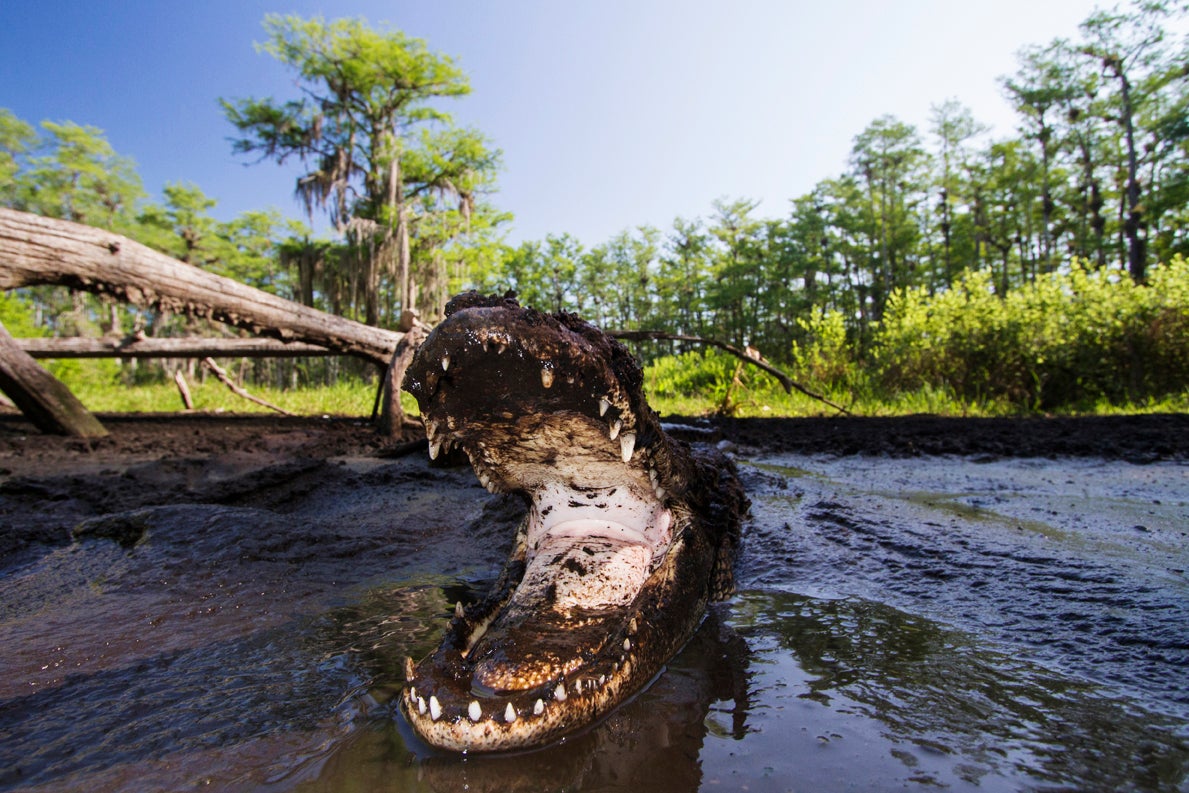Reimaging Swampland: Untold Stories of the Everglades
Photographer Mac Stone wants to change the way we look at America’s “fragile” swamps and wetlands, starting with the Everglades.

This page was published 7 years ago. Find the latest on Earthjustice’s work.
For centuries, swamps and wetlands have been regarded as eerie obstacles lying in the way of human development. Florida’s Everglades was no exception. While there is now a national park that’s been internationally recognized for its ecological importance, its waters continue to be heavily drained, diverted and polluted by Big Agriculture operations.
Earthjustice lawyers have a legacy of fighting to protect the Everglades that dates back more than two decades. They’ve worked to enforce limits on agricultural pollution, and fought for the establishment of nearly 60,000 acres of treatment marshes, which filter pollution from waters flowing into the Everglades.
While Earthjustice fights for the Everglades in the courtroom, photographer Mac Stone is taking the fight to the public. When Stone looks at America’s swamplands, he sees hidden gems. And he’s made it his mission to help others see the swamps in the same way. We sat down with Stone to discuss his new photo book, Everglades: America’s Wetland, and the role photography plays in getting the public to care about the Everglades in all its muddy, swampy glory.
DT: What drew you to the Everglades?
MS: When I was in high school I picked up a camera and started photographing areas around my house in Gainesville, Florida. My dad came up with the idea of going paddling on the wilderness waterway, which is a hundred-mile-long waterway connecting Ten Thousand Islands down to Flamingo marina in the Everglades. We’d go out paddling and photographing these storms that would come in over the Gulf of Mexico. That was my first foray into expeditionary photography and it was just the best possible introduction I could have had.
DT: Why did you choose photography as a medium?
MS: The Everglades has a more subtle beauty than Yosemite or Yellowstone—it’s much easier to misunderstand or under appreciate. I try to make the area more tangible through photography by focusing on a protagonist species that represents the needs of the system. People might not understand specifically why you need fresh water flows in Florida Bay. But when you show them that there’s an imperiled bird that depends on this system for its survival, you give them a visual story and association they can remember. High impact photographs have a unique way of reaching beyond the mind to the heart. We’re visual creatures, after all.
DT: What are some of the misconceptions people have about the Everglades?
MS: I think we need to abandon this idea that it’s fragile. This label allows many people to just give up. The minute that we assume that it’s fragile, we say that it just naturally isn’t supposed to last that long. And that’s not true. We’ve deprived the Everglades of its lifeblood—its freshwater. If you put that in human terms, it’s like robbing somebody of water and food for two weeks. If they’re hobbling along, you don’t say, ‘That person is weak. He’s fragile.’
You have this system that can not only withstand tropical storms and the fires and flooding that have ravaged the landscape, but also hundreds of canals and dams and dykes that prevent it from functioning as it should.
DT: Do you have a favorite memory of your work in the Everglades?
MS: I went to the Everglades for the first time when I was 15 years old. My dad and I camped on this island called Rabbit Key. I had my camera, and I sat out all day photographing these ospreys that were coming in and delivering food to their chicks in a low-lying mangrove. It was one of the best moments.
I came back to that same spot 14 years later after finishing my Everglades project and looked for the same tree I’d photographed before. It was gone—a hurricane had come through 10 years earlier. I was a little disappointed, but then I walked to the other side of the island and sure enough, in another tree there was an osprey delivering food to its chicks. You can send hurricanes, you can send fire, you can drain the Everglades, but it just refuses to fail.
DT: Are you optimistic about the future of the Everglades?
I’m optimistic because I surround myself with passionate people. I know people who are fighting every day to buy the land south of Lake Okeechobee to get the right amount of water moving in the right direction. When we first got to the Everglades, our main goal was to drain it—to relieve the land of water so we could plant crops, build towns, change swamp into development and agriculture. Half a century later, we now realize we contrived a system that is efficient at draining water but is killing one of our national treasures and in turn, our natural heritage.
The challenge is making policies that benefit both people and the Everglades. I think we can achieve that, but only if the public demands it. But they’re only going to demand it if they feel like it’s important and something they can be responsible for. That’s what the photos and narrative are all about: getting the public interested on an emotional level so they can then feel empowered to do something about it or support people who will.
Diana was an undergraduate at Duke University, majoring in environmental science, with minors in English and economics, and was an intern with Earthjustice's editorial team in San Francisco.
